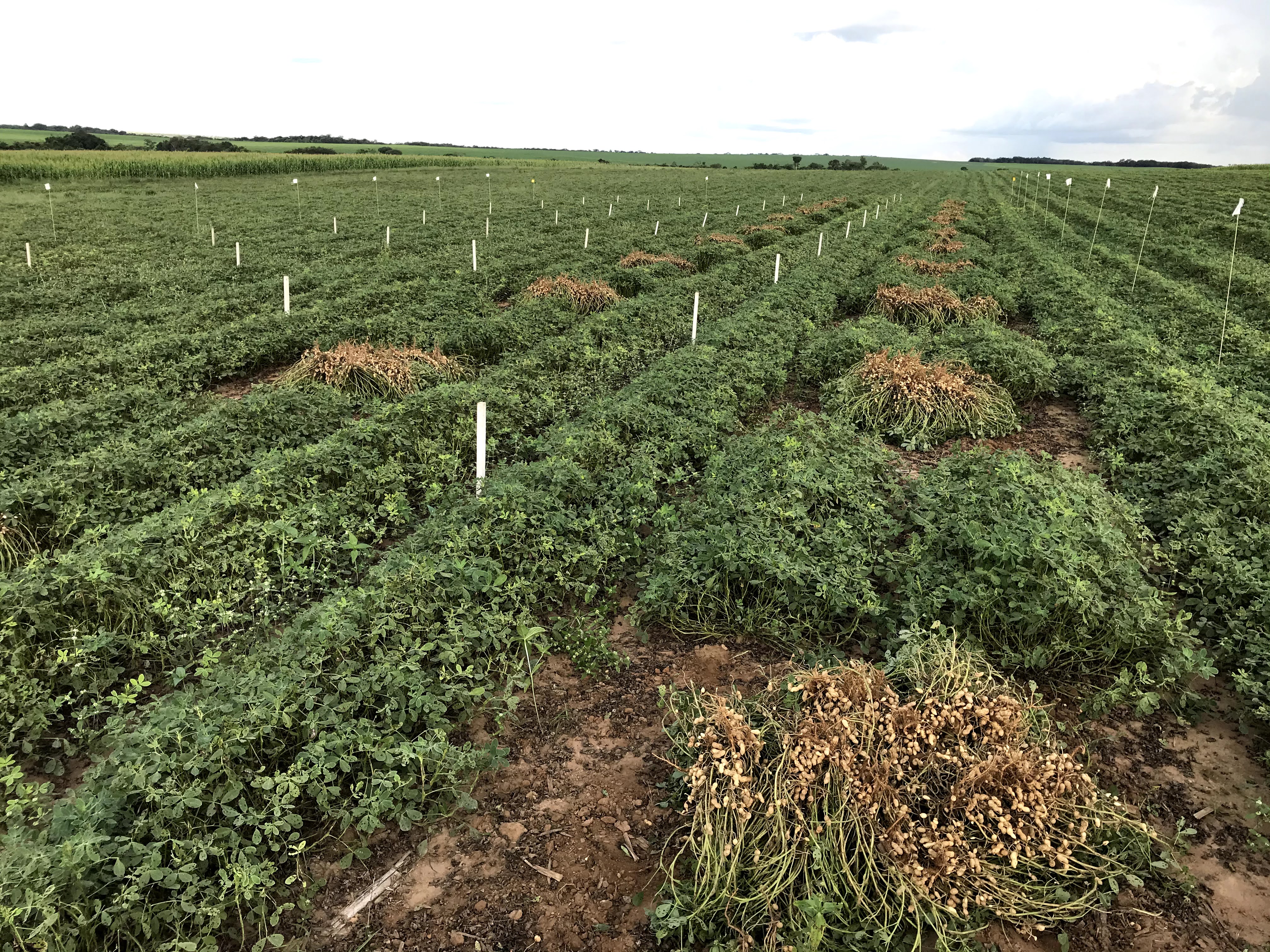Peanut response to rates of agricultural gypsum under Sorriso-MT conditions
DOI:
https://doi.org/10.52755/sas.v2iedesp2.139Keywords:
Arachis hypogaea L., Grain yield, CalciumAbstract
Peanut cultivation in Mato Grosso is normally carried out in marginal and sandy areas, whose soils are commonly exhausted after successive cultivations and intense rainfall, resulting in low levels of Calcium (Ca) and Sulfur (S). In this context, the objective of this work was to evaluate the effects of gypsum application on the peanut response in Sorriso-MT. The experimental design used was randomized blocks, with treatments arranged in a 2 x 5 factorial scheme, with two peanut cultivars, IAC 503 and Granoleico, five doses of agricultural gypsum (Gypsita) 0.00; 0.25; 0.50; 0.75 and 1.0 Mg ha-1, with 4 repetitions. Gypsum was surface-applied 35 days after emergence, at the beginning of flowering stage. At 135 days after sowing, at harvest time, grain yield (kg ha-1), shelling percentage (%) and 100-seed weight (g) were evaluated. For the environmental conditions in which the experiment was conducted, the cultivar Granoleico was more productive than the cultivar IAC 503. The shelling percentage and 100-seeds weight were not influenced by the cultivars and doses of gypsum. Peanut grain yield had linear increase by increasing the gypsum rate
Downloads

Downloads
Published
How to Cite
Issue
Section
License
Copyright (c) 2021 Dacio Olibone, Laerte Gustavo Pivetta , Marianitha Mariano Silva Duarte, Sergio Soares Filho, João Lucas Lopes Silva, Maria Eduarda Oliveira Pydd

This work is licensed under a Creative Commons Attribution-NonCommercial-ShareAlike 4.0 International License.
Autores concordam com os seguintes termos:
a) Os autores mantêm os direitos autorais e concedem à revista o direito de primeira publicação, com o trabalho simultaneamente licenciado sob a LicençaAttribution-NonCommercial-ShareAlike 4.0 International, que permite o compartilhamento do trabalho com reconhecimento da autoria e publicação inicial na Revista SAS. A licença permite o uso, a distribuição e a reprodução irrestrita, em qualquer meio, desde que devidamente citada a fonte. Essa licença permite também que outros remixem, adaptem e criem a partir do seu trabalho para fins não comerciais, desde que atribuam a você o devido crédito e que licenciem as novas criações sob termos idênticos.
b) Não cabe aos autores compensação financeira a qualquer título, por artigos ou resenhas publicados na South American Sciences.
c) Os conceitos expressos nos artigos publicados na South American Sciences são de inteira responsabilidade de seus autores.








